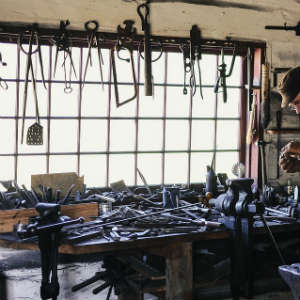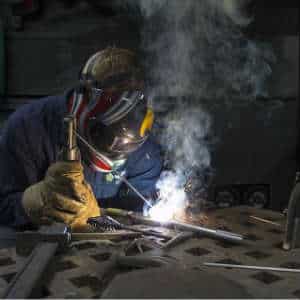Metalworking is a practice that is thousands of years old, although it has been refined quite a bit since our ancestors first began to forge tools and weapons. Today, metal is used in millions of different products, from parts in cars to materials used to build our homes. That’s why metal workers are a vital part of the workforce, using machines to cut, cast, and mold all different kinds of metals.
Even With Machines, Metal Work Is Dangerous
Any who works with metal understands the overall process. Usually, depending on what its intended use is for, metal must be cast, formed,
Casting
When metal is cast, it is melted down into molten metal and poured into a cast. It goes without saying, that in order to melt metal, high temperatures are required, meaning that workers can easily be burned.
Share this Image On Your Site
Forming
Over the years, metal workers have developed new ways to make each type of metal more pliable or conductive while still retaining strength. This process uses either extreme pressure or heat, which can lead to burns or crush injuries if a worker is in the wrong place at the wrong time.
Share this Image On Your Site
Cutting
Whether the metal is being cut via welding, drilling, sawing, turning, milling, or even water jets, the dangers are the same: workers can easily sustain lacerations, broken bones, or amputations if something goes wrong.
Share this Image On Your Site
Welding
When two pieces must be combined, the welding process is used to create a small pool of molten metal which should cool into a strong joint. In order to melt the metal, open flame, an electric arc, or even a laser can be used. Just like during the casting process, burns are common when a worker is in the process of welding.
Share this Image On Your Site
Workers’ Comp Is Supposed To Help
Like the hundreds of other industries in New York, employers in metalworking are supposed to obtain a workers’ compensation 
Insurance companies, however, have a bad reputation for a reason. During training, adjusters are taught to look for any excuse to either outright deny a claim or to reduce the amount that is paid out if a claim is approved, leaving injured workers with extensive debt.
What If I Was Responsible For My Accident?
Workers’ compensation is supposed to be “no-fault” meaning that it doesn’t matter who was responsible for the accident that caused injuries, all injured workers should be covered by the policy. There are a few exceptions to this rule – if it the employee was under the influence of drugs or alcohol while at work, they may not be covered.
A Lawyer Can Help
In order to get what is rightfully theirs, most workers need to consult with a qualified lawyer. When a lawyer enters the equation, insurance companies sit up and take notice.
An experienced lawyer will review the accident, identify all legal avenues open to the injured worker, assisted with filing paperwork, speak with the insurance company on their client’s behalf, collect evidence, and, if a denial has already been issued, an attorney can handle the appeals process.
What Other Legal Avenues May Be Possible?
In the majority of cases not only is the injured worker eligible to file for workers compensation but they can also file a personal injury claim to gain additional compensation, including full coverage of medical expenses, lost wages, emotional trauma, and physical turmoil.
In addition to this, if the injury is permanently disabling, they may also be able to file for Social Security Disability.




